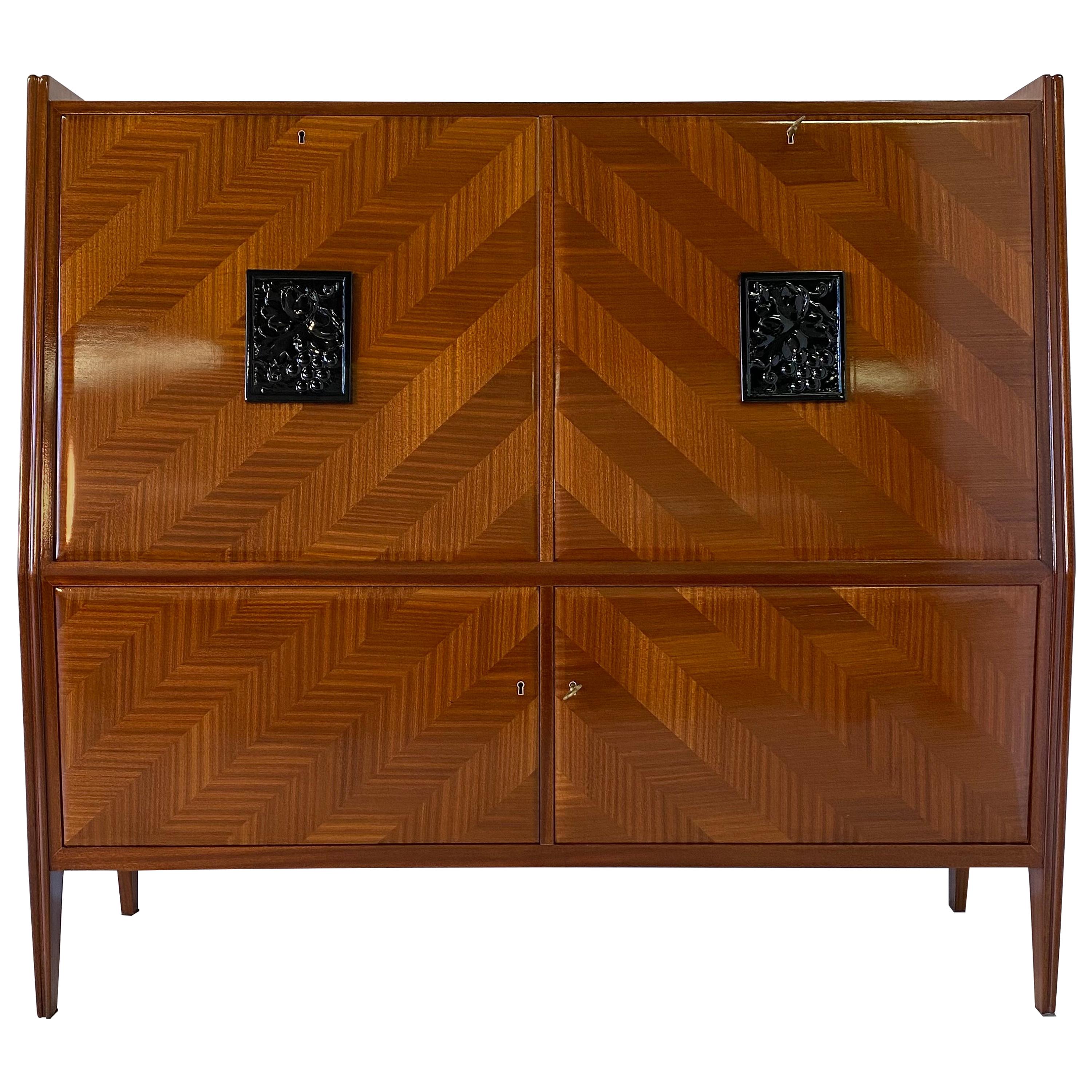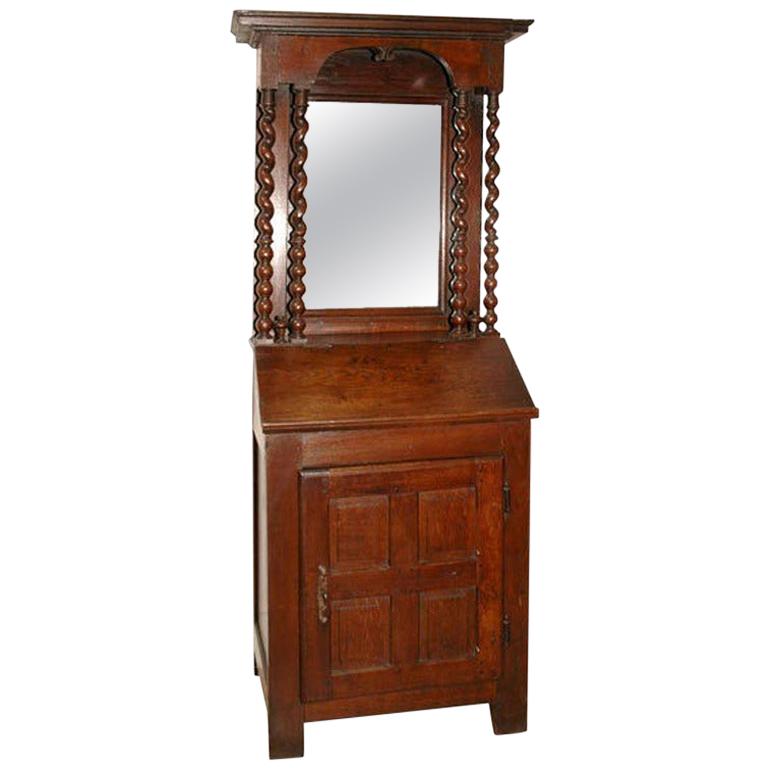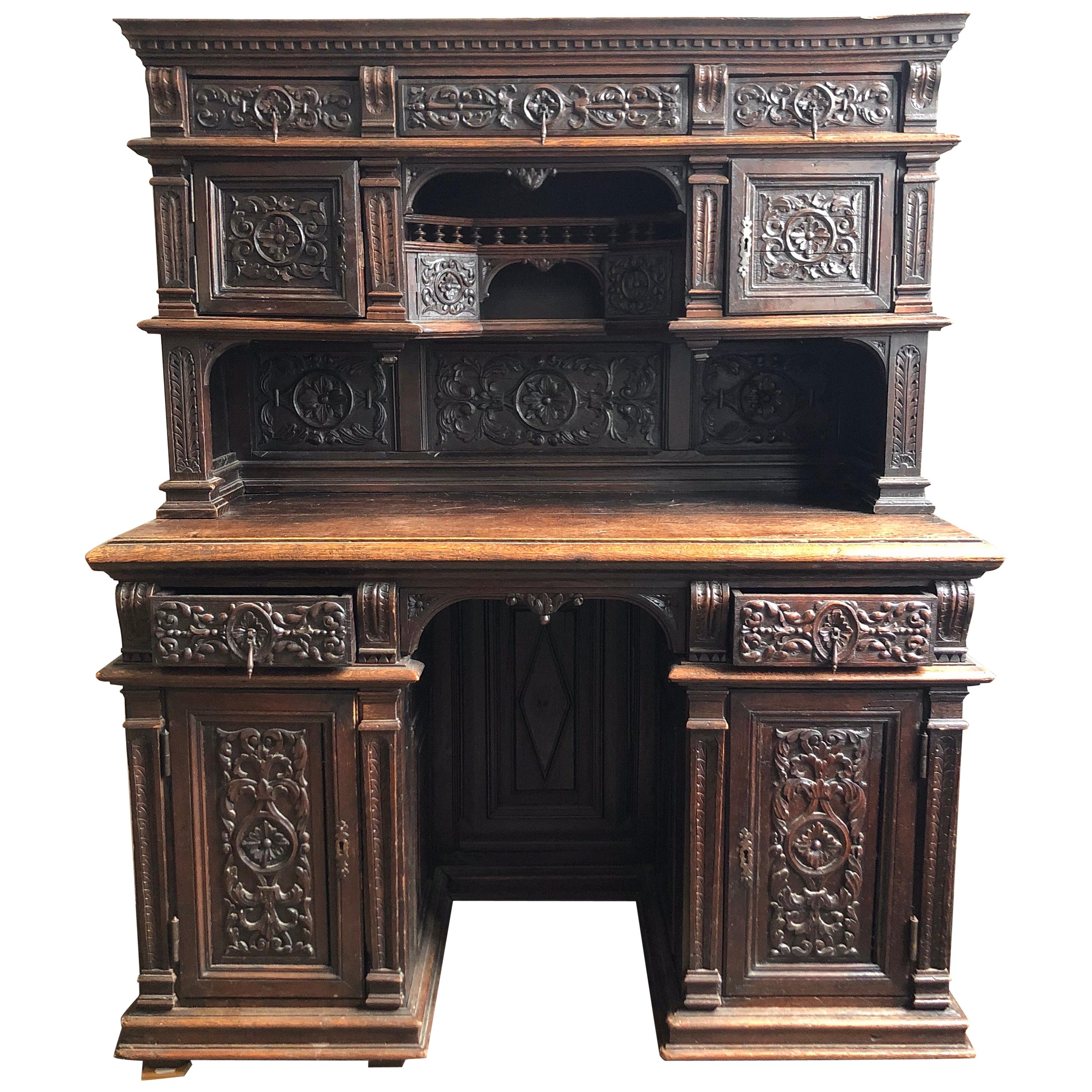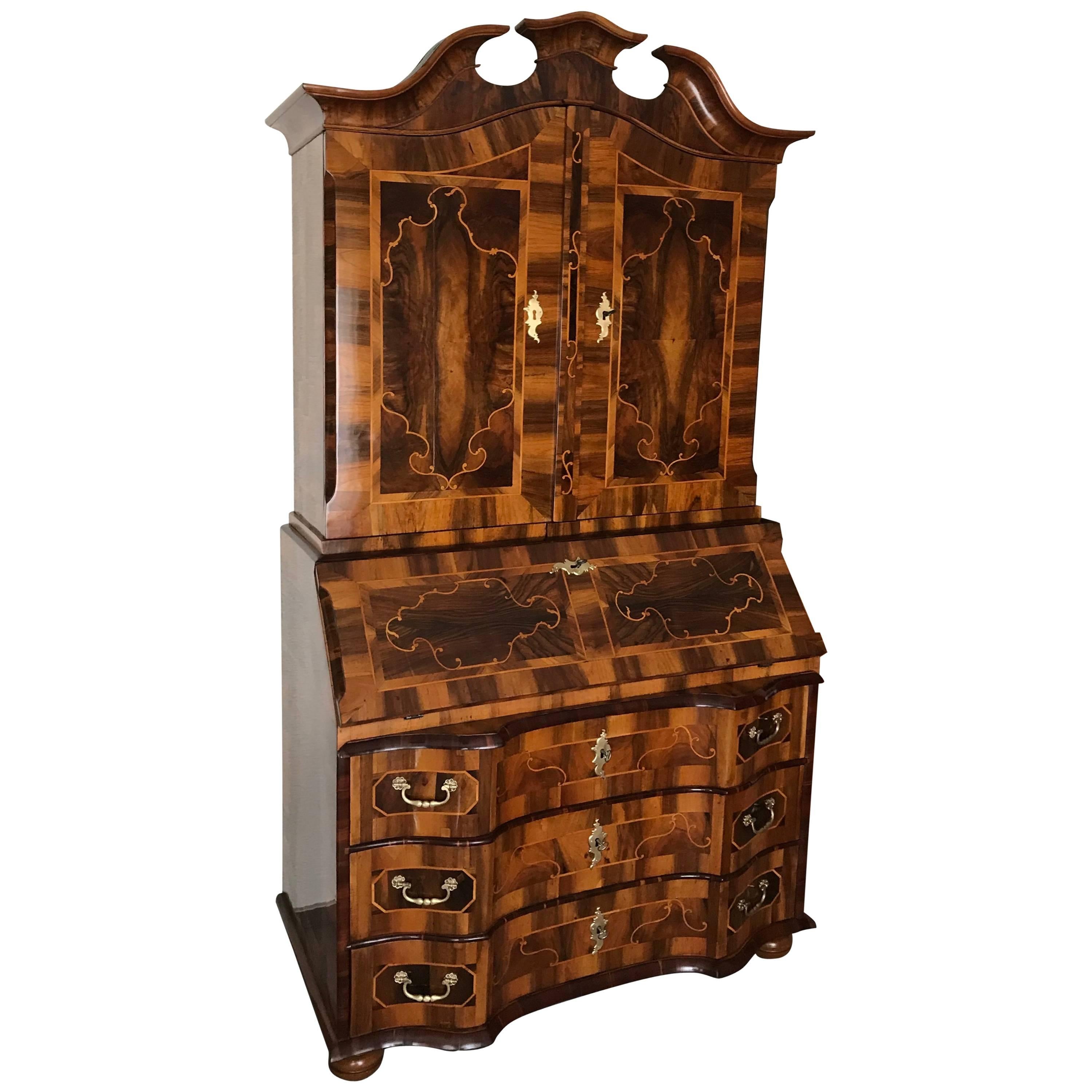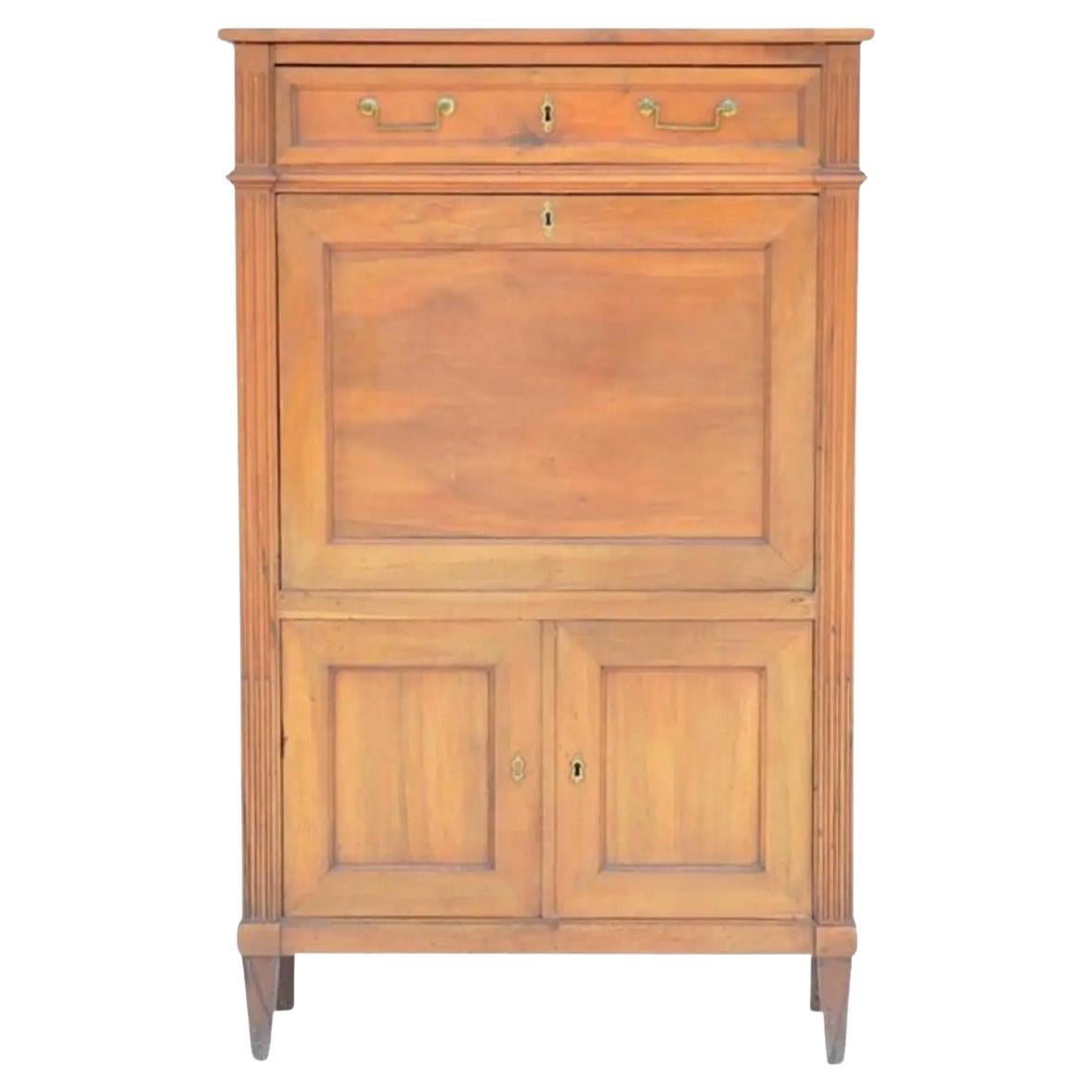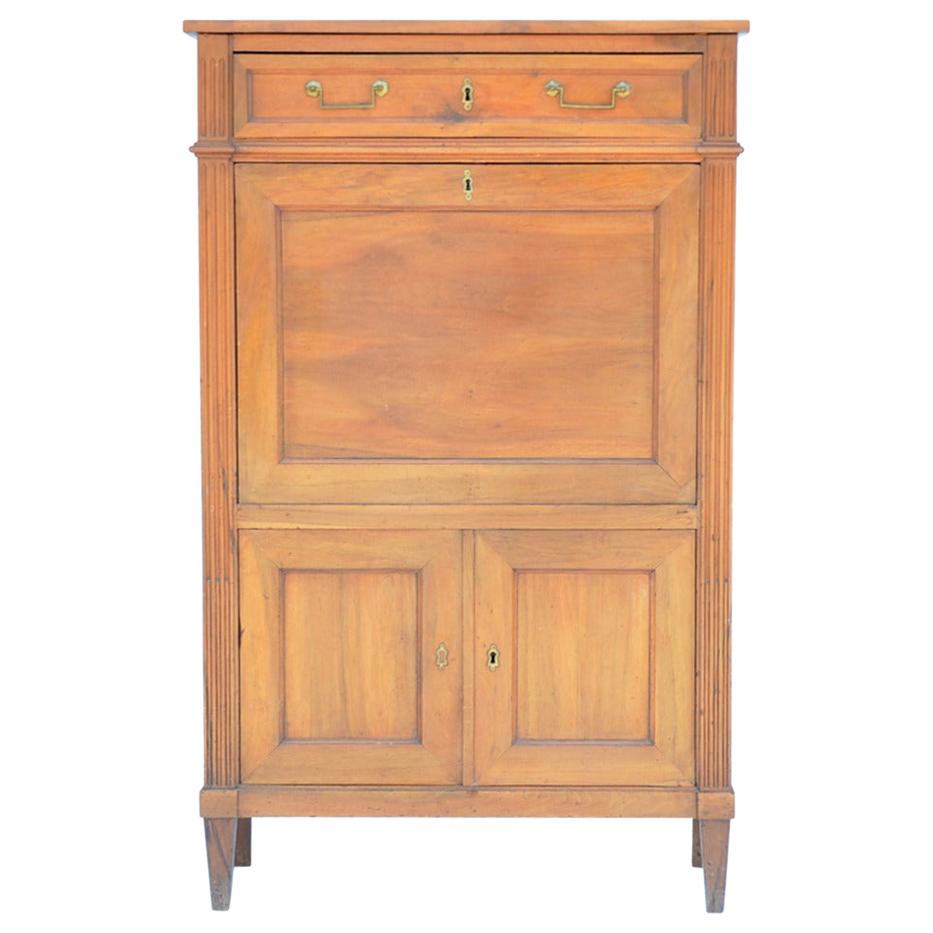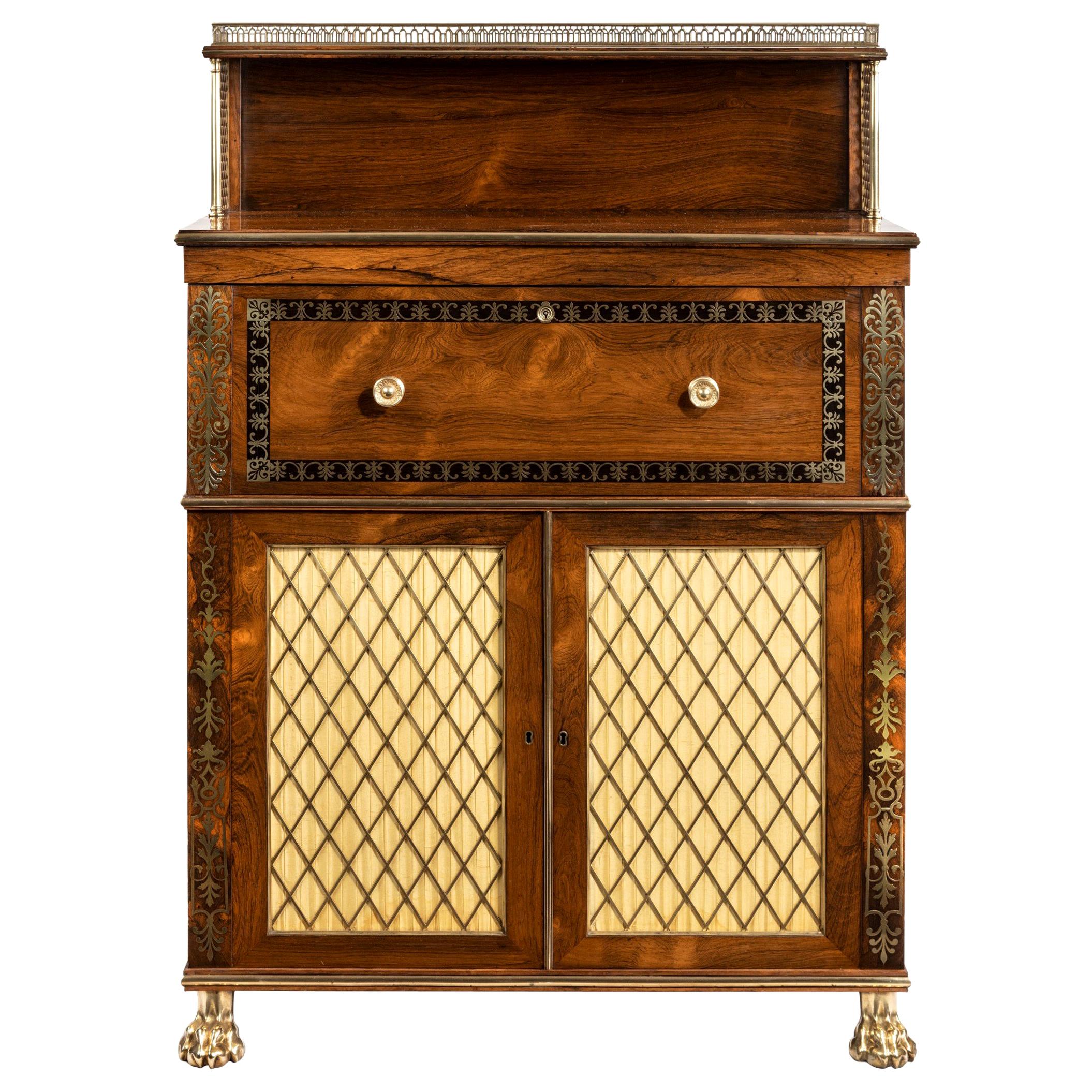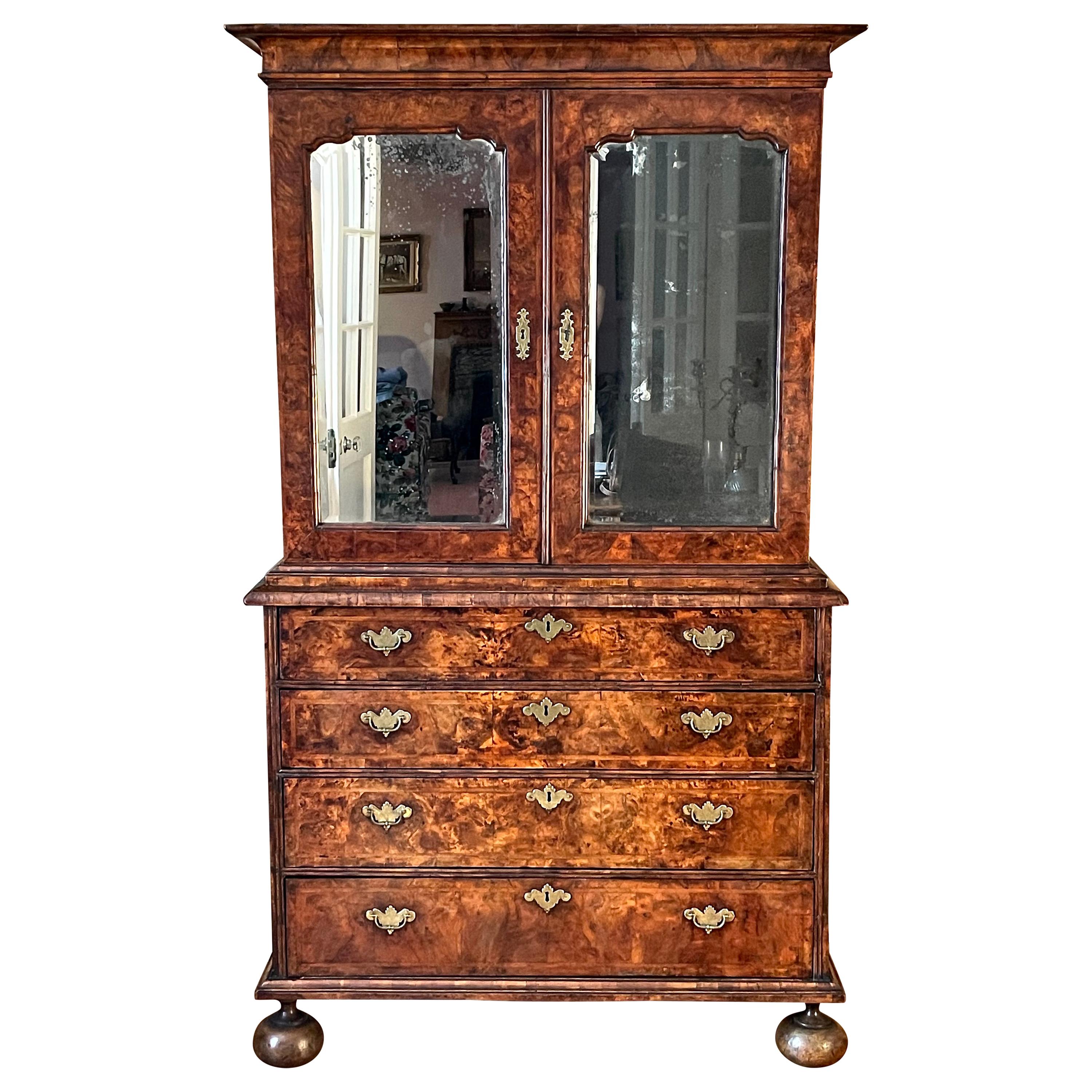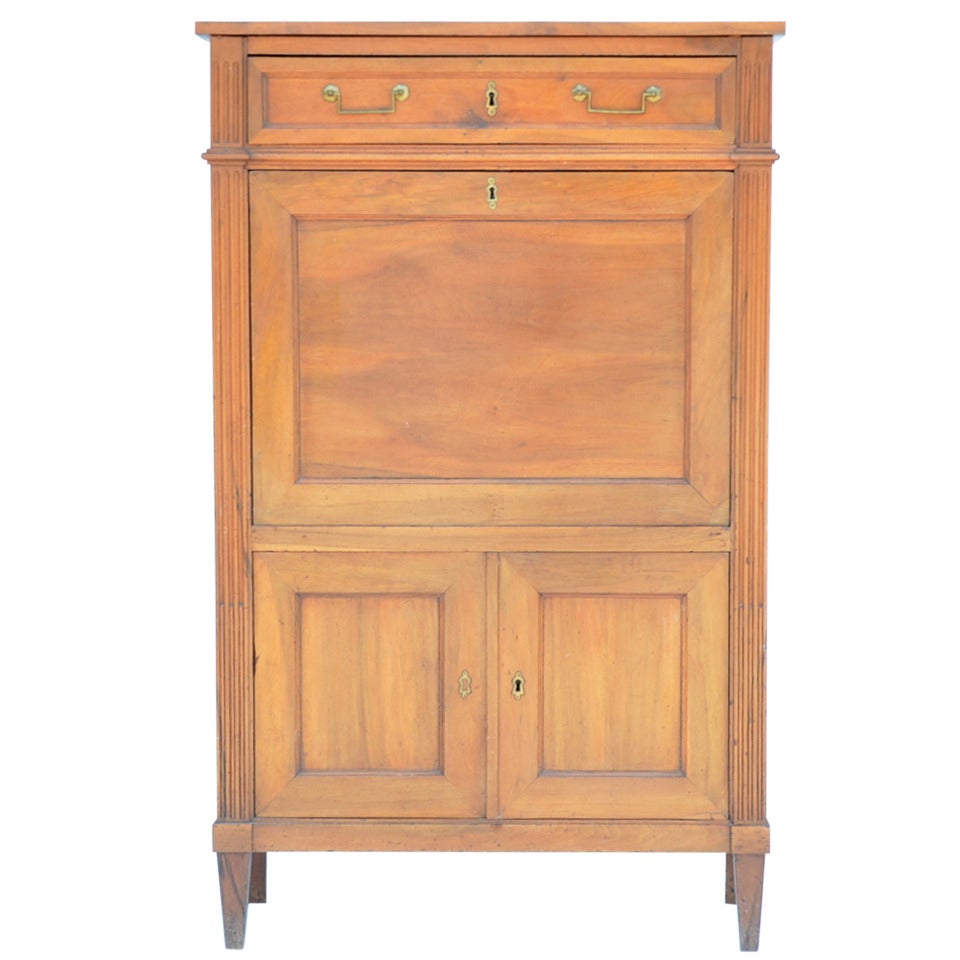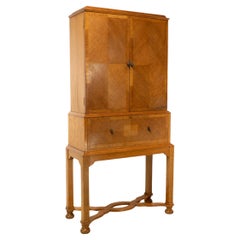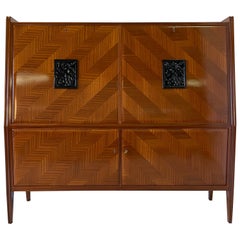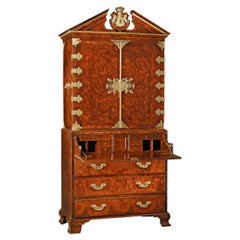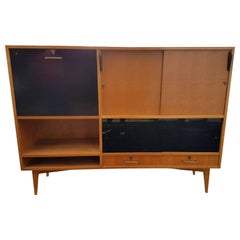
Charles Ramos Cabinet or Secretaire
View Similar Items
Want more images or videos?
Request additional images or videos from the seller
1 of 9
Charles Ramos Cabinet or Secretaire
About the Item
- Creator:Charles Ramos (Designer)
- Dimensions:Height: 53.55 in (136 cm)Width: 72.84 in (185 cm)Depth: 17.72 in (45 cm)
- Style:Mid-Century Modern (Of the Period)
- Materials and Techniques:Wood,Lacquered
- Place of Origin:
- Period:
- Date of Manufacture:circa 1950
- Condition:Wear consistent with age and use.
- Seller Location:Brooklyn, NY
- Reference Number:1stDibs: LU78478767903
About the Seller
5.0
Vetted Seller
These experienced sellers undergo a comprehensive evaluation by our team of in-house experts.
Established in 2004
1stDibs seller since 2003
70 sales on 1stDibs
Typical response time: 3 hours
More From This SellerView All
- Pair of Cabinets by Charles DudouytBy Charles DudouytLocated in Brooklyn, NYPair of cabinets by Charles Dudouyt. Located in NY.Category
20th Century French Buffets
MaterialsOak
$18,000 / set - Charles Dudouyt ArmoireBy Charles DudouytLocated in Brooklyn, NYCharles Dudouyt armoire.Category
Vintage 1950s French Wardrobes and Armoires
MaterialsOak
$15,500 - Gaston Poisson CabinetBy Gaston PoissonLocated in Brooklyn, NYCabinet in original condition from the 1950s , design Gaston Poisson Two doors opening with in built shelves.Category
Vintage 1950s French Mid-Century Modern Cabinets
MaterialsWood
$4,550 Sale Price30% Off - Blackened Oak CabinetLocated in Brooklyn, NYBlackened oak cabinet from the 1930's. Located in BrooklynCategory
Vintage 1930s French Mid-Century Modern Cabinets
MaterialsOak
$5,600 Sale Price43% Off - 1960's Modernist Teak CabinetLocated in Brooklyn, NYBeautiful cabinet from the 1960's with two sliding doors and one drop down door. Wood shelves behind the sliding doors and one glass shelf on the left Ebonized decor in between th...Category
Mid-20th Century French Mid-Century Modern Cabinets
MaterialsBrass
$3,600 Sale Price20% Off - Majorelle CabinetLocated in Brooklyn, NYMajorelle cabinet, available in NY, signed.Category
Vintage 1930s French Cabinets
MaterialsMahogany, Rosewood
$8,200
You May Also Like
- Charles Spooner Arts & Crafts Oak secretaire Cabinet with Serpentine StretchersBy Charles SpoonerLocated in London, GBCharles Sydney Spooner, probably made by J H Brandt. A rare oak secretaire cabinet on stand, with quarter veneered panels to the doors and drawers with black and green diamond shaped handles. The doors open to reveal adjustable shelves. The sides and lower stand are all made from solid quarter sawn oak with beautiful figuring. The slightly graduated mouldings to the waist frame the tidy little writing area. Standing on squashed ball feet, united with serpentine entwined stretchers. This is an oak variation of the cabinet Charles Spooner exhibited at the Arts and Crafts Exhibition Society in 1910. One can see that both cabinets are essentially the same design, one with drawers one with a pull down writing area. Both have quartered veneered panels to the doors, the Mahogany one with applied moulded decoration to the doors. See : illustration below from : Arts and Crafts Furniture by John Andrews. See also : Charles Spooner Arts and Crafts Architect, page 209 illustration 10:28. : Fine Art Society for a Coromandel variation and Puritan Values : Important Furniture Page 1, for a larger four door lacquered panelled variation. Charles Spooner is noted as one of the most influential people and also credited as one of the fathers of the Arts and Crafts Movement. Born at St Mary's Hospital, Paddington (London), Spooner was the second of 5 children of Charles Spooner and Sarah Frances Trinder, who lived at Brook Green, Hammersmith. Spooner became an architect and an instructor of furniture design at the London County Council's Central School of Arts and Crafts. He was a pupil and then assistant of Sir A W Blomfield and in 1890 won the RIBA’s Soane Medallion (Proc RIBA). He specialised in smaller churches and houses turning out some beautiful and complete buildings. He was influenced by E W Godwin and contemporary American architects such as H H Richardson. He was a member of the Society and Protection of Ancient Buildings and the Art Workers Guild, he worked in the tradition of William Morris, teaching...Category
Vintage 1920s English Arts and Crafts Cabinets
MaterialsOak
- Italian Mahogany Secretaire Cabinet, 1950sLocated in Meda, MBPrecious cabinet secretaire produced in Italy in the 1950s, The whole cabinet is veneered in mahogany with a fine solid wood carving in the center of the two doors representing two b...Category
Vintage 1950s Italian Mid-Century Modern Cabinets
MaterialsMahogany, Maple
- King George I Ambassadorial Secrétaire-CabinetLocated in New Orleans, LAThis highly important secrétaire-cabinet was crafted for and specially ordered by King George I for the British Ambassador to Russia. From its craftsmanship and materials to its exceptional artistry, it is a work of royal and historic significance that exudes power in each and every detail. The broken pediment at its apex features the simplified royal coat of arms bearing the king’s crown, while the interior is adorned by portraits of the British Royal Family. Placed within the ambassador’s St. Petersburg home, this entirely unique piece of furniture would have been a potent reminder of England's grandeur and political importance. Relations between England and Russia during this period were at an all-time high. Peter the Great had traveled to England in 1698 as part of his widely known “Grand Embassy” tour, wherein he attempted to gain foreign support against the Ottoman Empire. He spent a period of nearly four months there, meeting with King William III and his court on numerous occasions. Noted academic Arthur MacGregor wrote concerning the impact of the trip, “For two decades following Peter's visit, British influence in Russia reached a peak. It manifested itself in social custom, in craft practice and in ships and naval organization... it reached a significant sector of the population before relations cooled once again and the two nations pulled back from this era of unprecedented cordiality.” First and foremost, however, it is a reminder of British might and influence. By the reign of King George I, England had come into its own as a world power. Unique in its design, this cabinet is a reflection of the country’s might. It is crafted from the highest-quality solid walnut and burr walnut adorned by gilded lock plates and engraved hinges. The presence of ormolu at its apex and lining the doors was a rarity for this period, and its addition makes manifest the importance of the design. The outer doors open to reveal multiple interiors, including fifteen separate drawers around a central cupboard; the cupboard doors each bear mezzotint portraits of George I and his father, Ernest Augustus, Elector of Hanover. An etching after the portrait of George I dating to circa 1716 is in London’s Royal Academy. A second, inner pair of doors are adorned by mezzotints of the Prince and Princess of Wales (later Queen Caroline and George II), which are both after portraits by Sir Godfrey Kneller dated 1716 in the Royal Collection. A final portrait is revealed on the very interior of the cabinet, where a mezzotint of Frederick, Anne, Amelia and Caroline, children of the Prince of Wales, resides. An etching (circa 1715-1720) after this portrait can be found in the National Portrait Gallery (London). Apart from its abundance of royal portraiture, the cabinet features stunning painted decoration, including floral designs as well as clouds, birds and trees in a bucolic motif reminiscent of Eden. Its lower portion is a study in both form and function, featuring a fitted secrétaire-drawer above three additional drawers for storage. The cabinet appears in The Shorter Dictionary of English Furniture by R. Edwards from 1964, a text that is regarded as the bible of British furniture design. Edwards describes it as a “writing cabinet...given by George I to the British Ambassador at the Russian court.” The cabinet was likely made for the 18th-century German diplomat and writer Friedrich Christian Weber, who represented English interests at the Russian court from 1714 until 1719. Although Weber’s tenure as ambassador was relatively short, while in St. Petersburg, he authored his account entitled Das veraenderte Russland (The Present State of Russia), which was published in three volumes in 1721, 1739 and 1740. It may, however, also have been made for George Douglas, 2nd Earl of Dumbarton, who served as ambassador alongside Weber in 1716. Diplomatic relations ceased between the two countries in 1721. In 1928, the cabinet appeared for sale at the International Exhibition of Antiques & Works of Art in Olympia. It had previously been in the collection of the Woltner family of Bordeaux, the celebrated vintners who owned the estate Château Laville Haut-Brion and produced wine of the same name. According to the family, Monsieur Woltner was given the cabinet as a gift from an aunt who lived in Russia for many years. After leaving the Woltner collection, the cabinet was acquired by William Berry...Category
Antique 18th Century English Georgian Secretaires
MaterialsBrass
- Early 18th Century French Petite Secretaire or Bureau with Projecting CabinetLocated in Los Angeles, CAEarly 18th-century French dark wood secretary or fall-front bureau cabinet with charming proportions. Featuring a carved projecting cornice and arched front, original glass mirror fr...Category
Antique 18th Century and Earlier French Secretaires
MaterialsWood
- Henri 2 Cabinet or Secretaire in Sculpted Oak Renaissance Style, 19th CenturyLocated in Beuzevillette, FRRare cabinet desk Henri II style in carved oak. The base is made up of two boxes each with a drawer and a door carved and framed by columns. On the wooden top rests the cabinet treat...Category
Antique 1870s French Renaissance Revival Cabinets
MaterialsOak
- Baroque Cabinet with Secretaire, Germany 1750Located in Belmont, MAStunning original baroque cabinet, Germany 1750. The cabinet originates from the area of the city of Brunswick. Walnut, plum wood and satinwood veneer. The cabinet will be directly s...Category
Antique 1750s German Baroque Cabinets
MaterialsWalnut
$19,800 Sale Price29% Off

